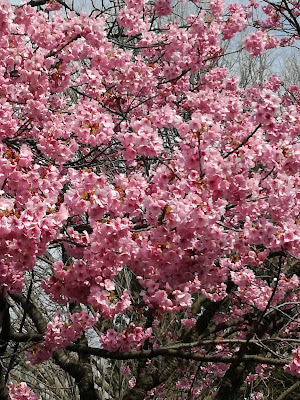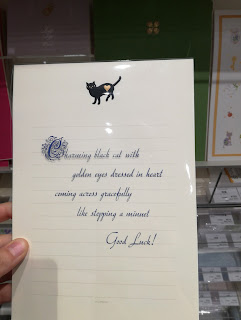Once a year, at the turn of spring, the entirety of Japan turns from this...
...to this:
Now before I get into all my words, take a minute and just look at the photos below. Take a good, long look.
I know I'm no pro photographer but...can you feel it?
Now as stunning as these trees are, equally or even more amazing is how perfect every single petal is. Every one. Every solitary petal on every single one of the uncountable millions of blossoms.
Look.
Sakura (cherry blossoms) inspire so much more than happiness in Japan. They are far more than just the heralds of spring. The experience, to me, can only be described as spiritual.
Let me see if I can do it even some bit of justice with a low-grade camera, questionable photography skills, and mere, mortal words.
Sakura bloom en-masse only once a year: when it becomes warm after a long period of cold. Great resources are expended to predict when exactly this will be, but no one can tell for certain. Because they are tied to the weather patterns, they can be extremely fickle. Sometimes, if you get a warm spell in winter, a tree or two will decide to bloom - treasures, for sure, but very isolated ones. They can also tease you, like they did this year. They'll start, popping out a glorious bloom or two...
...and then decide that it's too cold and wet and hold back their splendor for another week. Though I can't say I blame them, it was aggravating all the same.
The most iconic sakura is white and has five, full and rounded petals.
But there are many varieties in shape, number of petals, and of course, color.
One of my favorites (and I'm clearly not alone in this) - the weeping sakura.
These ones grow in adorable little pompoms!
Bonsai sakura.
My personal favorites - the beloved five-petal shape with a mix of blossoms with yellow-green and pink centers, interspersed lightly with the green of leaves.
All of them are perfection.
Here are some more varied scenes for your enjoyment:
Sakura lead beautiful, brilliant lives.
But the thing about sakura is that their lives are only half the story. Lots of things are beautiful. Roses, waterfalls, a blue sky, these things can take your breath away too.
What sets sakura apart isn't just their lives, it's equally or more about their deaths.
Bear with me while I try to explain what the sakura mean to me.
Sakura symbolize mortality, and are a reminder of just how quickly life fades. Their lifespans are staggeringly short. In about a week they reach the mankai, or full-bloom, and from there, they have about another week to gradually wane, and sometimes significantly less if there is wind or rain.
As beautiful as it is, it is also incredibly sobering. Rivers run white with fallen petals, and if you stop to think of what that symbolically is, it's heartbreaking.
There is a word in Japanese - setsunai - that has always intrigued me. There is no true English equivalent - though one dictionary defines it simply as "cruel", and another as "melancholy". It was first explained to me as the feeling you get remembering a past love when a song that was special to the both of you comes on, something beautiful and terrible at the same time. It's sadness, but colored with nostalgia - a mixture deeper than sadness alone for the beautiful memories of the past.
Whether or not I have the true meaning of setsunai right, that's the kind of feeling I get walking alone through the remains of the sakura.
The poet Kobayashi Issa said:
"What a strange thing!
To be alive
beneath cherry blossoms."
If you look up Japanese poems and quotes on sakura, you will find that for every one that is celebratory, there is at least one more that is sober, pensive, or outright sad. This is why I don't like to say that salura are just a "symbol of spring". Yes, they are, but that's only a fraction of the story! I do not think anyone in Japan looks at sakura and feels the same way we in America feel about, say, Easter bunnies and chicks and tulip buds. It's not a giddy, light-and-sparkles happy. From the very first blossom, everyone knows that this will not last. They are, in every sense, a reminder that life is short.
Which brings me to my favorite lesson of all to be learned from the sakura:
Which brings me to my favorite lesson of all to be learned from the sakura:
Life will not last, so live it.
Now.
Everything grinds to a halt for the sakura. People travel great lengths to see sakura, or wait for twenty-hours or more to stake out a picnic spot beneath the trees. The teen with her smartphone is trying to preserve on her smartphone as many precious sakura moments as the seventy-year-old man is with his camera, despite how many sakura cycles he has seen. It is a time to be happy, to enjoy, now, while it lasts. It is a time made precious precisely because it is so short. It's a time to forget the future and let go of the past and live in the moment - to literally stop and smell the flowers.
Live now, and live beautifully.
It's a lesson I need every single year.
Luckily, they will be back to remind me.


































































